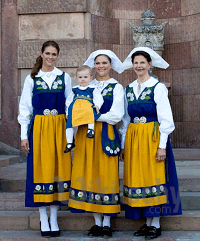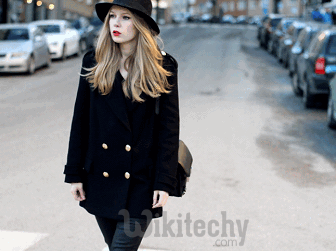
Sweden Interview Outfits
Sweden Details
- Sweden people - Swedes
- Sweden capital / capital of Sweden - Stockholm
- Sweden language - Swedish
- Sweden population / population of Sweden - 21 February 2017 estimate 10,014,900
- Sweden currency - Swedish krona (SEK)
- Attitudes and values form the basis of any culture. They reflect the ways swedish people think and behave.
- Knowledge of these can be of significant importance if you wish to communicate with your counterparts effectively.
- Ignorance of these issues can put up a cultural barrier that may inhibit the communication process, and have a negative effect on the success of your activities in a country.
Sweden DRESS CODE FOR JOB INTERVIEWS
- It is important to demonstrate at an interview good appearance as well as good manners.
- Make sure to dress formally.
- Men wear conservative jackets and ties.
- Women wear dresses or suits and pantsuits.
- Caps, bandannas, athletic shoes, sweats, unkempt clothes, jeasinglets,
- open shoes and thongs are never acceptable.
- If the wind was blowing, comb your hair before making first contact at the reception.
- Do not carry a water bottle or coffee mug.
- Carry only a slim folder holding your job application documents and CVs.
- Do not chew anything

Read Also
Argentina Interview Outfits.BUSINESS DRESS CODE
- Sweden is one of the European countries where a casual dress code is the most popular in the work place. However, for business appointments you should dress more conservatively. Swedes themselves are usually fashionably well-dressed in public.
- Appropriate clothes would be a dark suit and tie for men, and a business suit or skirt and blouse for women. Trousers are also acceptable for businesswomen in Sweden. Swedes value quality and that is also true when it comes to clothes.
- The all-embracing value of egalitarianism in Swedish society can be seen in the business dress code. Modesty and a low profile are important.
- Avoid wearing anything flashy, even the most senior executives do not dress more elaborately than average employees.

- Most restaurants do not require a tie for men, although upscale ones expect both men and women to dress well. Highly-styled clothing is preferred by the Swedes in the evening when going out and this is even the case in the smaller towns.
- You should remember that there are four distinct seasons in Sweden. This should be taken into account when planning what to wear. During the height of summer, the weather can be hot and humid. The long winter requires appropriate winter clothes: heavy coats, warm gloves, hats, and boots.
- As is the case throughout all the Nordic countries, the colder weather allows women, and sometimes men, to wear heavy boots to work, and then to change into more comfortable office shoes. Because it is cold in Sweden, be prepared to dress in layers.
TRADITION IN SWEDEN
- In Sweden, women traditionally wore skirts, aprons, stockings, hats and shoes, while men and boys wore trousers, shirts, long socks and shoes. Swedes refer to traditional styles of dress as folk dress and national costumes. Different styles of dress appeared for men and women, and distinguished social classes from one another

- In the early 1900s, Queen Silvia and Marta Palme introduced the Swedish national costume, which varied in design and color for the different socioeconomic classes, to give Swedes a sense of national pride and unity as citizens
- Men and women's traditional folk dress come in the two primary colors of blue and yellow, the colors of the Swedish flag. Swedes made their own garments at home. Although instructed to follow national standards, clothing varied among regions within Sweden.
- Women's national costumes featured aprons, scarves, bonnets and bags. Aprons extended down to the ground, and featured full, pleated skirt bodies.
- Women wore neck scarves over blouses, made with linen, silk or wool and decorated with intricate embroidery. Head coverings, usually lace-lined hats, protected women's hair from dirt and oil, and helped retain warmth.
- swedish people love clothes and hottest focus preferred by the swedish men , swedish women and swedish girls are swedish clothing , swedish clothing brands , swedish fashion , scandinavian clothing , scandinavian fashion , sweden shirt , swedish brands , traditional swedish clothing , norwegian clothing , swedish design , nordic clothing , danish clothing brands , norwegian clothing brands , danish clothing
- Men and women completed national costumes with bags. Bags came in different styles and fabrics to indicate the socioeconomic status and geographical origins of wearers.
Read Also
Austrian Interview Outfits.FASHION IN SWEDEN

- While modern Swedish people dress like most of the Western world, there are events that call for Swedish national folk dress and this includes an apron, head covering, neck scarf and waist bag. The colors represent the colors of the Swedish flag.
- The apron part of the outfit is the primary focal point and designers use wool, cotton, silk or crepe to make it. The head covering is generally a white linen, but some also have a lining or lace to stop hair oil from penetrating the fabric.
- The neck scarf goes over the vest and blouse. The waist bag goes back to the middle ages and it works to represent the province or parish of the wearer.
CLOTHES OF SWEDISH PEOPLE
- Swedish fashion, much like Swedish architecture and design, is characterized by modernity, simplicity and clean geometric shapes. On the streets of Sweden, women often pair gray and black skinny jeans with oversized button-down shirts and large scarves.
- Men wear tight black trousers and jeans with gray sweaters and dress shoes.Swedish people often wear a monochromatic palette of grays and blacks.
- When they do wear color, they typically wear muted blues and olive greens. Despite this simplicity, the Swedish style is dramatic and distinct. Instead of bold colors or patterns, Swedish people opt for bold cuts.
- Dramatic silhouettes, such as layers of thick sweaters and scarves worn on top with skinny jeans on bottom, are commonly seen in Swedish fashion and street style. Popular fabrics include wool, cotton and leather.
- Black boots and thick heels are popular for women. Men wear black boots and athletic shoes.Swedish fashion and its minimalist aesthetic have spread throughout the world. H&M is the most famous Swedish brand, with over 2,629 stores worldwide.
- Other popular Swedish fashion brands include Odd Molly, Cheap Monday, Acne Jeans and Filippa K. These brands have gained recognition not only for being sleek and modern but for their distinct casual and unisex aesthetic.
Read Also
Belgium Interview Outfits.SWEDISH NATIONAL FOLK DRESS:
- The SWEDISH NATIONAL FOLK DRESS was designed and promoted by Marta Palme in 1903 to help promote a feeling of national pride. The colors are taken from the Swedish flag. The response was luke-warm until Nation Day, June 6, 1983 when the dress was worn by Queen Queen Silvia.
- In the Swedish culture, garments and the rules of protocol developed for creating and wearing them reflected your place in society. The garments identified you by gender, occupation, social class, marital status and geographic location. Fabrics and garments were home/hand made.
- Business people focussed on the pulse of swedish people. They are mainly looking for many aspects of dressings like, swedish coats , swedish backpack brands , swedish rucksack brand , scandinavian backpack brands , scandinavian backpack , swedish winter coats , scandinavian winter coats , scandinavian waterproof coats , norwegian outdoor clothing brands , scandinavian mens clothing , swedish winter jackets , sweden sweatshirt , scandinavian coat brands , scandinavian outerwear brands , norwegian brand jackets , scandinavian womens clothing , swedish jacket , swedish coat company , scandinavian boots ,
- We celebrate these wonderful garments and traditions as a means of respect and understanding for the life of our immigrant relatives, what they came from and brought with them. They help us link to time and place declaring "we belong together...we are linked to the past."
LIST OF SWEDEN FOLK DRESS:
The Apron (forklade)
- A necessary and important part of the Folkdräkt. Made of linen or wool and later, cotton, crepe or silk, it is the focal point of the costume.
The Neck Scarf (sjan)
- Made of linen, wool and cotton or silk with a variety of designs or embroidery, the square scarf is folded on the diagonal and worn on top of the blouse and vest and either tied or secured with a pin.
The Head covering (huvudbonad)
- Head coverings came in a variety of types. White linen started and folded/draped in elaborate forms called huvudduk or klut. Formed hats of silk or satin called bindmossa. They often have a ruffled lace edge/lining to protect the fabric from hair oil.
Waist Bag (kjolvaska)
- Worn outside the skirt or pants some designs date to the Medieval ages. Made of linen, wool or leather the design announces parish or province of the wearer.
